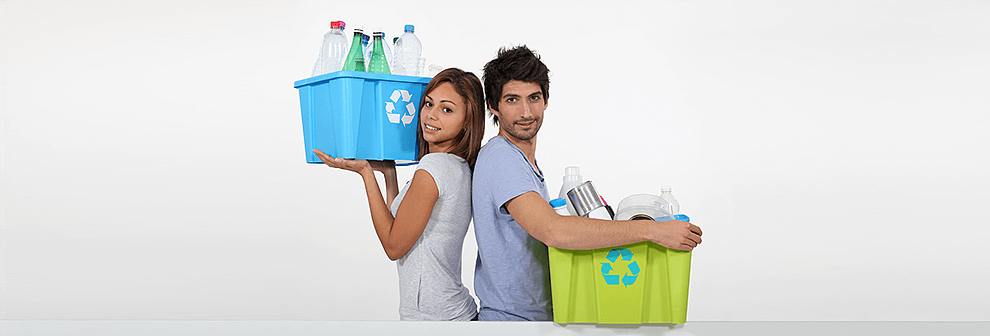Step-by-Step Guide to a Plastic-Free Kitchen
Posted on 09/03/2025
Using less plastic in our daily lives is becoming increasingly essential as the environmental impact of plastic waste continues to grow. Among the rooms in our homes, the kitchen is where plastic use is particularly prevalent. From food storage to cookware, plastic items are ubiquitous. However, transitioning to a plastic-free kitchen is a feasible and rewarding endeavor. Here's a step-by-step guide to help you create a more sustainable kitchen environment.
Assess Your Current Plastic Use
Before you can make meaningful changes, you need to understand where and how plastic is used in your kitchen. Take inventory of items stored in plastic containers, plastic bags, cling wraps, utensils, and cookware with plastic parts. Make a list of these items and categorize them based on their necessity and frequency of use.

Replace Plastic Storage Containers
One of the most significant sources of plastic in the kitchen is food storage containers. Consider substituting these with alternatives made from glass, stainless steel, or silicone. These materials are not only eco-friendly but also safer for food storage as they do not leach harmful chemicals like some plastics can.
Glass Containers
Glass containers are durable, versatile, and can be used to store both hot and cold food. They are easy to clean and don't retain odors or stains. Brands like Pyrex offer various sizes and shapes to fit your needs.
Stainless Steel Containers
Stainless steel containers are lightweight and durable. They are excellent for storing dry goods and can also be used for carrying lunch to work or school. Brands such as LunchBots and Onyx offer high-quality options.
Silicone Bags and Lids
Silicone is another excellent replacement for plastic bags and lids. Reusable silicone bags can replace single-use plastic bags, and silicone lids can cover bowls and dishes instead of using cling wrap. Products like Stasher bags and Silpat silicone lids are popular choices.
Eliminate Plastic Utensils and Cookware
Another significant step towards a plastic-free kitchen is replacing plastic utensils and cookware. Opt for materials like wood, stainless steel, bamboo, and ceramic which are sustainable and long-lasting.
Wooden and Bamboo Utensils
Wooden and bamboo utensils are aesthetically pleasing and environmentally friendly. They are gentle on cookware and do not transfer heat like metal utensils. Bamboo is particularly sustainable as it grows quickly and does not require pesticides.
Stainless Steel Utensils
Stainless steel utensils are durable and can easily be sterilized. They offer a sleek and modern look and are suitable for most cooking tasks.
Ceramic and Cast-Iron Cookware
Ceramic and cast-iron cookware are excellent plastic-free alternatives. They are non-reactive and distribute heat evenly. Brands like Le Creuset and Staub offer high-quality ceramic and cast-iron options.
Adopt Reusable Grocery and Produce Bags
Single-use plastic bags are a significant contributor to plastic waste. Switching to reusable grocery and produce bags can dramatically reduce your plastic footprint.
Cloth Grocery Bags
Cloth grocery bags, often made from cotton or jute, are a fantastic alternative to plastic grocery bags. They are durable, washable, and can be used for years. Look for brands that use organic materials and ethical production practices.
Mesh Produce Bags
Mesh produce bags can replace plastic bags for fruits and vegetables. They are lightweight, washable, and breathable, keeping your produce fresh. Brands like Eco-Bags Products and Flip & Tumble offer a variety of sizes.
Opt for Bulk Buying and Refills
Buying in bulk and opting for refill stations can significantly reduce the amount of plastic packaging you bring into your home. Many stores now offer bulk sections where you can bring your own containers to fill up on grains, nuts, spices, and other dry goods.
Bulk Buying
Bulk buying not only reduces plastic waste but can also be more cost-effective. Stores like Whole Foods and local co-ops often have extensive bulk sections. Take your glass or stainless-steel containers to fill up on pantry staples.
Refill Stations
Refill stations for items like dish soap, laundry detergent, and other household cleaners are becoming more common. Support stores that offer these services and make it a habit to bring your own bottles for refills.
Switch to Plastic-Free Cleaning Products
Many kitchen cleaning products come in plastic bottles and contain harmful chemicals. Transition to plastic-free, eco-friendly cleaning solutions to create a healthier home and environment.
Soap Bars and Refills
Replace liquid dish soaps in plastic bottles with solid dish soap bars or liquid refills from bulk stations. Brands like No Tox Life offer effective bar soaps that last a long time.
Natural Cleaning Solutions
Homemade cleaning solutions using ingredients like vinegar, baking soda, and essential oils are effective and eco-friendly. Store them in glass spray bottles to avoid plastic.
Sustainable Cleaning Tools
Replace plastic scrubbers and sponges with sustainable options like wooden dish brushes, coconut fiber scrapers, and washable cloths. These alternatives are biodegradable and often more effective.
Compost and Recycle
Waste management is a crucial aspect of a plastic-free kitchen. Composting organic waste and recycling materials responsibly can greatly reduce your overall waste footprint.
Composting
Set up a compost bin in your kitchen for food scraps. Composting reduces landfill waste and creates nutrient-rich soil for gardening. If you don't have a garden, many communities offer composting programs.
Recycling
Properly sort and clean recyclable materials. Stay informed about what your local recycling program accepts and avoid "wishcycling" - tossing items into the recycling bin in the hope they will be recycled.

Encourage Plastic-Free Habits in Your Household
Creating a plastic-free kitchen is a team effort. Encourage all members of your household to adopt sustainable habits and make it a fun and rewarding process.
Educate and Involve
Educate your family or housemates about the environmental impact of plastic and involve them in the transition. Assign tasks like shopping for reusable alternatives or managing the compost bin to engage everyone.
Lead by Example
Lead by example by consistently using plastic-free alternatives and explaining their benefits. Over time, these new habits will become second nature for everyone in the household.
Conclusion
Transitioning to a plastic-free kitchen is an achievable goal that contributes significantly to environmental sustainability. By assessing your current plastic use, replacing plastic items with sustainable alternatives, adopting bulk buying and refills, and promoting plastic-free habits, you can create a healthier and more eco-friendly kitchen. Small changes can lead to a significant reduction in plastic waste, making a positive impact on our planet. Start today, and enjoy the benefits of a plastic-free kitchen.




